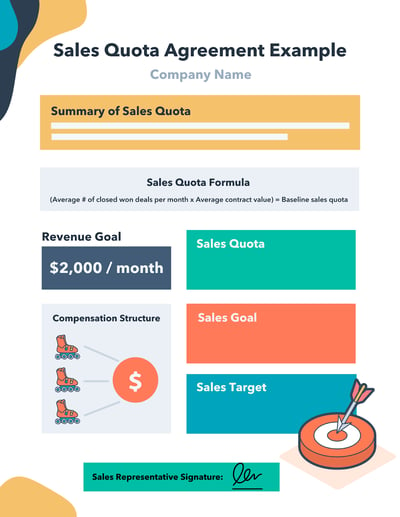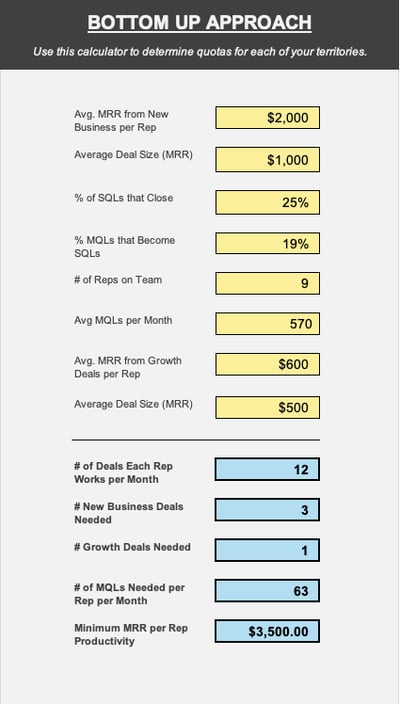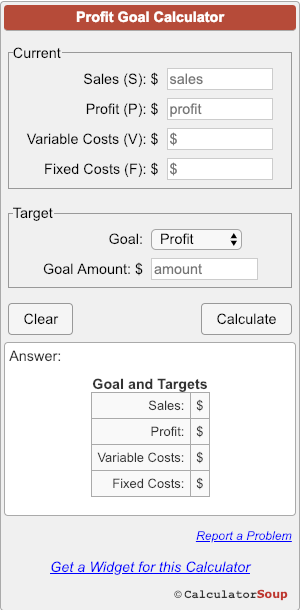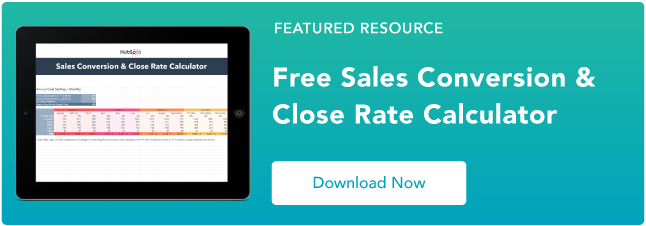Salespeople, how tired are you of hearing “coffee’s for closers”? If your answer is “very,” I’ve got to apologize now because I’m about to get a little Glengarry Glen Ross on you.
This 1992 classic has become a rite of passage for every salesperson. In the film, Alec Baldwin’s straight-talking sales manager arrives at a small business to motivate the sales team. The top two salespeople at the end of the week will be given access to promising Glengarry leads while the others will be fired.
For sales managers, Glengarry Glen Ross is a cautionary tale. Motivating your sales team isn’t about taking the coffee from their lips, it’s about setting realistic quotas tailored to each rep, the type of product or service they’re selling, and the market they’re selling to.
So, how do you avoid driving your reps to stage a burglary to steal the best leads? Here’s everything you need to know about setting successful sales quotas.
Sales Quotas vs. Sales Goals
Are sales quotas and sales goals the same thing? Not quite. Sales quotas are often part of a series of actions set to help salespeople achieve a certain goal.
For example, if a company sets a goal to increase revenue by 25% in 2021, the sales leadership would identify how many sales they need to close in 2021 to meet that revenue goal.
Then, they would calculate how many deals their salespeople need to close per quarter to contribute to that goal. The financial value of those deals would be the salesperson’s quota.
A salesperson’s quota is often directly tied to their compensation plan, including commission and bonuses.
Sales Quota vs. Sales Target
Another sales metric that gets mistaken for the sales quota is the sales target. Sales targets differ from sales quotas in that targets are usually defined for a team rather than an individual. Sales targets outline how many products or service packages your team needs to sell to reach revenue goals for a specific period of time. Sales targets help salespeople break down their sales goals and sales quotas into attainable parts.
Sales Quota Agreement

Once sales quotas are set and sales goals and targets are accounted for, sales reps receive a sales quota agreement outlining each of these items. The purpose of a sales quota agreement is to provide transparency about what is required to meet quota and how that quota will be calculated throughout the selling period. Sales quota agreements keep salespeople accountable for hitting goals and keep managers accountable for rewarding performance accurately.
There are many ways to measure quota. Smaller companies selling a single product with a static price often set quotas around how many units (i.e., 28 pairs of skates) a salesperson must sell every month.
Larger companies selling multi-tiered products or services might have a more nuanced quota structure where a salesperson is held to the overall value of the deals they need to close (i.e., $4,500/month).
But quota structure doesn’t end there. Here are the five most common types of quotas and examples of each one.
1. Activity Quota
An activity quota requires salespeople — usually BDRs or SDRs — to complete a set number of activities during a period of time, usually one month or quarter. Activities usually include phone calls, follow-up emails, scheduling meetings, and leading demos.
This type of quota is usually assigned to BDRs or SDRs who are part of a larger selling team and aren’t responsible for closing actual business. An activity quota ensures they’re contributing to the sales organization and providing valuable help to the reps they support.
Activity Sales Quota Example
Sales rep Jonathan has a quota of 45 phone calls per month, 84 follow-up emails, and 12 demos each month. These activities are tracked in his CRM and his sales manager can easily see how he’s tracking to meet his quota.
2. Volume Quota
Sales reps with volume-based quotas are goaled on the number of units they sell or the total revenue they generate during a specific time period. They’re incentivized to sell as many units as they can.
Volume Sales Quota Example
Jonathan, with JVN Skates, has a quota to sell 75 pairs of skates each month. He must sell at least 75 pairs to meet his quota. He likely receives a commission on each pair of skates he sells and receives a bonus when he reaches his quota.
3. Profit Quota
This type of quota is based on the gross profit or margin of a dedicated sales team, product/service grouping, or salesperson.
If you’re held to a gross margin quota, your number would be calculated by subtracting the cost of goods you sell from the overall revenue. A gross profit quota is calculated by subtracting selling expenses and the cost of goods sold from the final revenue number.
Profit Sales Quota Example
Jonathan sells skates to professional skaters. He sells fewer skates at a higher cost than his sales colleague Antoni, who sells a larger volume of cheaper skates to recreational skating rinks. Jonathan and Antoni would both have profit quotas of different amounts.
4. Combination Quota
Some salespeople may have more than one quota. A combination quota might include an activity quota and a profit quota. A combination strategy gives reps a roadmap to success and provides smaller milestones to make their quota more easily attainable.
Combination Sales Quota Example
Jonathan’s quota includes several activity quotas and a profit quota. He must make 50 calls every month, lead 15 skate demos, and close $2,500 worth of business adjusted for selling expenses and the cost of the skates.
5. Forecast Quota
Forecast quotas are generally assigned to specific sales territories or teams. A forecast quota is calculated based on the historical performance of a region and the revenue goal it must hit.
Forecast Sales Quota Example
Let’s say Jonathan is the pacific northwest territory rep for JVN Skates and traditionally closes $7,500 in sales during Q4. If his goal is to increase Q4 revenue by 25% this year, his quota would be $9,400 for the quarter.
If Bobby, the rep who’s responsible for the southwest sales region, historically closes approximately $4,500 in Q4 revenue, he might have an adjusted quota based on his unique market.
6. Revenue Sales Quota
A simple way to set sales quotas is to use revenue as the goal. That means each salesperson will be responsible for bringing in a specific amount of revenue each month or quarter. While this is a pretty simple sales quota, you can customize this to fit the needs of your business and your sales team. For example, you could incentive reps to sell certain products by breaking the larger revenue quota down into smaller sections.
Revenue Sales Quota Example
Jonathan is responsible for meeting a revenue sales quota of $2,500 per month. Based on historical data, he knows that he needs to sell about 75 $33 skates to meet quota. However, if his sales manager breaks the revenue goal down by product, Jonathan can have more flexibility by selling fewer, more expensive skates or targeting low-hanging fruit by selling a larger number of less expensive ones.
How to Calculate a Sales Quota
A common rule of thumb is that 80% of your sales team should be able to meet their quota most of the time. If that’s not the case, consider that your sales quota might not be realistic, To fix this, recalculate it based on more attainable goals. Here’s a step-by-step guide for setting a realistic sales quota for your team.
Step 1: Establish Your Baseline
A baseline is your sales organization’s minimum standard of performance. It’s important to establish a realistic baseline to understand how much business your sales team needs to close to meet the basic needs of your business.
To establish a baseline, look at the revenue your sales team closed over the last 12 months. Divide that number by 12 to understand exactly how much revenue your team must bring in every month.
From there, adjust that number to account for territories, reps, time off, and seasonal fluctuations. If your east coast territory has less market opportunity than your west coast territory, sales managers should adjust each team’s baseline quota accordingly. Your baseline quota will likely be different per quarter as a result.
If Q4 brings seasonal highs for a company, rep baseline quotas in Q4 would likely be higher than those in the Q2 late spring/early summer season when skate orders are down.
Finally, account for forecasted growth. While you never want to set unrealistic sales quotas, it’s important to ensure they’re growing with your business. If your executive team forecasts 15% growth in Q3, adjust quotas accordingly.
Step 2: Start From the Bottom Up
Top-down quota setting is when sales leaders set quotas based on growth goals over their salespeople’s abilities.
The danger with a top-down approach to quotas is it gives less weight to a sales team’s historic data and proven abilities. It’s almost entirely driven by where the company board or executive team would like to be and less by realistic and healthy expectations of the sales team.
A top-down approach starts with a quota and works its way down to the activities necessary to achieve that number.
Ideally, sales teams should take a bottom-up approach to setting quotas. Sales managers can start by looking at historic data showing what their reps are capable of generating and calculate a quota based on those results.
Pro Tip: If your business needs to take a top-down approach because it’s a start-up or you’re coming back from an atypical year, you can consider expanding the headcount or skillset of your sales team to achieve those revenue goals. Just remember to set part of your budget aside for this and plan accordingly.
Step 3: Set Activity Goals
Once you’ve calculated a baseline quota and adjusted it for seasonality, rep ability, and growth goals, it’s time to set activity goals.
While you may or may not tie activities to a formal quota of their own, it’s helpful for reps to have a roadmap showing them approximately how many calls, emails, and demos they need to conduct to meet their quota.
Platforms like HubSpot Sales Hub allow sales managers to track sales activities and performance so you can easily see which reps are your top performers and what activities they’re doing to close business.

Your sales quota should take into account a rep’s base salary, the average number of leads available, number of target activities (i.e., 15 calls/day and 20 follow-up emails/day), target incentive pay, target total compensation, and any extra bonuses available.
Sales Quota Template

Download Now
Your sales quota should be unique to your business, and it should evolve with your market and business goals. Download our sales plan template to help you set goals, calculate quotas, define an action plan, and more.
Sales Quota Calculators
1. Yesware Quota Calculator
Yesware has calculators for top-down and bottom-up quota setting. Once you input the required data, Yesware will give you a sales quota number.

Image Source
2. Panalysis Sales or Conversion Target Calculator
This calculator is best for giving reps an idea of what their quota should be. It takes a broader approach by including your annual revenue target, average monthly visitors/leads, monthly conversion/close rate, average deal size, and monthly growth goals.

Image Source
You’ll likely want to do some tweaking for seasonality, territory and market opportunity, and rep ability.
3. Calculator Soup Profit Goal Calculator
Setting profit-based quotas? This calculator is for you. Enter your average monthly or quarterly sales, profits, variable costs, and fixed costs, to calculate your quota or goal amount.

Image Source
Enemies of a Healthy Sales Quota
Many things can work against your ability to set a realistic sales quota — and your rep’s ability to meet it.
1. Unrealistic Quotas
If you set your quota without considering seasonality or historical rep performance, you’re setting your team up for failure.
Similarly, don’t adjust quota based on an unexpected renewal or larger than average deal. Raising rep quotas because of a great month can demoralize high-performing reps and stall growth.
Before raising quotas, make sure you have at least three months of data to support the decision — and that it’s not just coming from one rep and their specific territory.
If you have one rep or territory consistently beating their number, identify what their success is due to and consider adjusting their quota instead of changing everyone else’s.
2. Stress Due to Unrealistic Quotas
The fastest way to see your sales team burn out is by setting unrealistic quotas. As a sales manager, it’s your job to know your team’s limits and make that argument to your executives when they push for a more top-down approach to quotas.
The average tenure of SDRs has seen a 50% decline from an average of 2.5 years in 2010 to 1.5 years in 2018. Sales is already a volatile profession. Retain top-tier employees by ensuring their quotas are realistic and they have the support to meet and exceed their goals regularly.
3. Commission Caps
Commission caps limit the amount of commission a salesperson can earn. When a rep has hit their commission cap, they are no longer financially rewarded for closing more business. This de-incentivizes reps to push the limits and close more business.
SaaStr founder and sales pro Jason Lemkin says there’s no good reason to cap commission, “At least, not until you are at $20-$30 million ARR or more, and maybe much higher.”
He continues, “If you cap this too early, you are limiting your revenue per lead.”
Set Your Sales Quotas Like A Pro
In the final scene of Glengarry Glen Ross, the salespeople scatter and face the various consequences of their actions from the previous night. But one salesperson heads back to the office. Why? To make his usual sales calls.
At the end of the day, salespeople have the same goal: to move deals forward and close business that will benefit the customer and the salesperson. Stay focused on setting realistic sales quotas and tune out the rest of the noise for your team.
Editor’s note: This post was originally published in March 2019 and has been updated for comprehensiveness.

![]()




